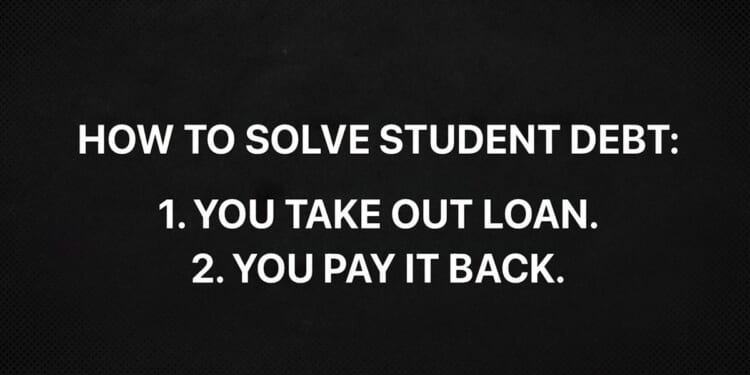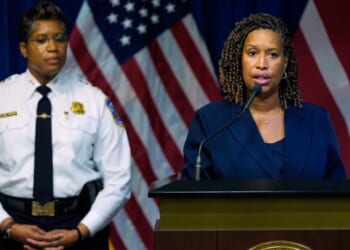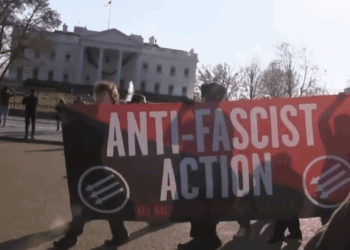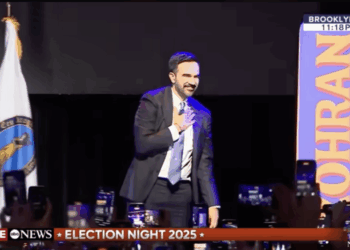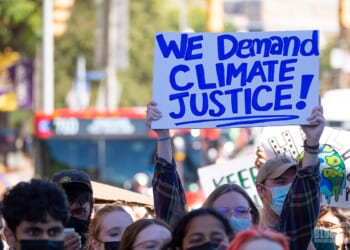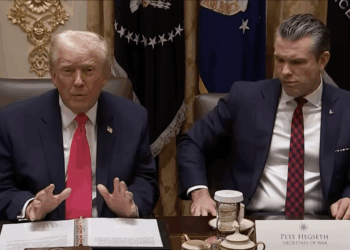Democrats want young people buried in student loan debt to think student loan forgiveness involves nothing more than wiping off the balance sheets of millions of debtors with money pulled out of a magic hat.
It’s hard to blame the students. In the financial aid offices of colleges and universities, students line up to receive tens of thousands of dollars in loan payments without a credit check, without a discussion of the enormous responsibility they’re taking on, or without an honest conversation about how they’re going to pay it back. In reality, these students will need a lifetime of paltry paychecks to put a dent in their debts.
According to U.S. News, “Average student loan debt has been on the rise as families try to keep up with soaring college costs. The average total student debt hovers near $30,000, with 2024 college graduates owing $494 more in loans on average compared with the prior year, according to U.S. News data.”
It’s no wonder, then, why so many students are eager to have their loans disappear overnight without giving a second’s thought to how a zero balance in their account might take the weight off their shoulders but shift the burden to someone else. It’s yet another Democrat scheme that benefits some at the expense of others.
A few years back, the House Committee on Education Workforce explained, “Research demonstrates that student loan forgiveness disproportionately benefits high-income borrowers. This is unfair to the millions of Americans who never went to college, to the Americans who have already paid off their loans, and to future borrowers who will continue to see massive college tuition costs.”
Student loan forgiveness had been on the Democrats’ wish list for years as a way to pander to young voters. When President Joe Biden pledged to forgive millions in student loan debt, the Supreme Court stepped in to rebuke his power grab. Ignoring the Court’s ruling, Biden found a workaround and wiped out nearly $200 billion in loans anyway.
When Donald Trump returned to the White House, his administration planned to stop loan forgiveness. As Taylor Herzlich writes at the New York Post, “Trump’s Education Department, led by Linda McMahon, argued it could block these programs due to a court order pausing the Biden-era Saving on a Valuable Education plan (SAVE), another income-driven repayment program. The temporary blocks left borrowers with just one repayment plan option, resulting in loan cancellation, known as the Income-Based Repayment plan.”
Then, writes Jasmine Laws of Newsweek, “The Trump administration removed the application to enroll in Income-Based Repayment (IDR) plans from government websites and issued an order to government student loan contractors to halt all IDR enrollment and processing, which it said followed court orders.”
That didn’t sit well with the teachers unions, who don’t care how student debt is erased or who will have to foot the bill when the dust settles. Pressured by the American Federation of Teachers, President Trump has agreed to reinstate loan forgiveness. Fox Business explains, “The administration and the American Federation of Teachers (AFT) reached the agreement Friday in the AFT v. U.S. Department of Education case, resolving months of legal tension over the government’s obligation to cancel student debt for borrowers who have made decades of payments under federal law.”
One reason the Trump administration paused loan forgiveness earlier this year was Biden’s abuse of the Public Service Loan Forgiveness (PSLF) Program. A White House press release explains, “The prior administration abused the PSLF Program through a waiver process, using taxpayer funds to pay off loans for employees still years away from the statutorily required number of payments,” adding, “The PSLF Program has misdirected tax dollars into activist organizations that not only fail to serve the public interest, but actually harm our national security and American values, sometimes through criminal means.”
So that’s what they were doing all along. Loan forgiveness had nothing to do with taking the burden off the backs of American college grads serving the interests of their communities. Instead, some were working for organizations opposed to American values.
Forgiving student loan debt is a feel-good approach that ignores the other issues that contribute to student debt in the first place. One is the federal student loan program itself, which guarantees tens of thousands of dollars to each student who walks onto campus, leading to high tuition rates and shielding colleges and universities from market pressures.
The negative impacts of loan forgiveness don’t stop there. Removing debt releases more money into the economy, which in turn leads to higher inflation. Colleges won’t bother exploring options to make tuition more affordable if they know students expect their loans to be “forgiven” in the future. And what’s fair about making other people pay the price for someone else’s debt? As Matthew Noyes wrote a few years back at the Foundation for Economic Education, “Loans are not ‘forgiven’ or magically disappeared. They are paid off by taxpayers. Whether it is through higher taxes, printing more money, or contributing directly from the national debt, you and I will end up being the ones that pay for it.”
Forgiveness also sends a bad signal to young people about personal responsibility. If the government can wipe out college loans, what about credit card or personal loan debt?
Student debt is nearing $2 trillion, but forgiving loans won’t stop students from taking out loans anytime soon. On the contrary.
The federal government shouldn’t be in the loan business in the first place, and it’s long past time to fix yet another problem the political class keeps kicking down the road.

